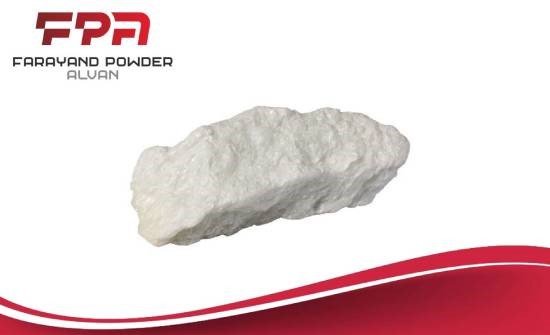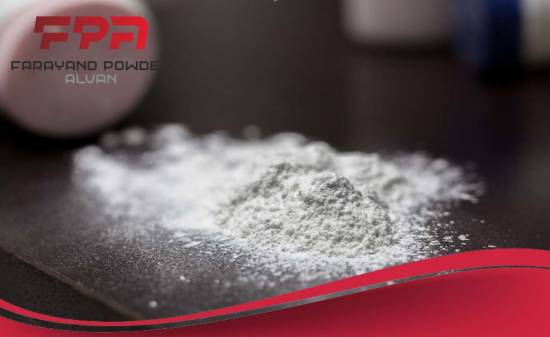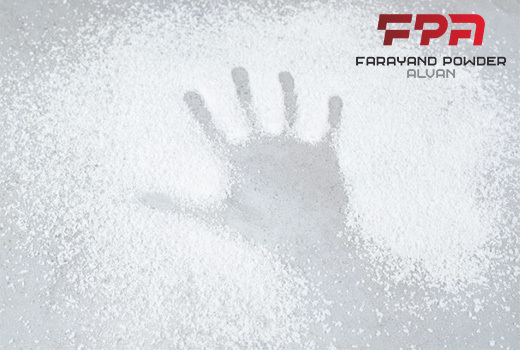Talc, chemically known as magnesium silicate, is a naturally occurring mineral. It is often found in metamorphic rocks and is known for its softness, making it an essential ingredient in various consumer and industrial products. This article will delve into talc, its origins, uses, safety considerations, and more.
Talc formula
The chemical formula of talc is Mg3Si4O10(OH)2, representing its mineral composition. Talc is a hydrous magnesium silicate mineral classified as a phyllosilicate, a group of minerals with a layered structure. Its chemical formula reflects its fundamental components:
- Mg (Magnesium): Talc primarily contains magnesium ions. These ions give talc its characteristic hardness and chemical properties.
- Si (Silicon): Talc is rich in silicon, forming tetrahedral structures in its mineral layers.
- O (Oxygen): Oxygen atoms link the magnesium and silicon ions in a hexagonal lattice, creating the sheets or layers in talc.
- OH (Hydroxyl): Hydroxyl groups are present in the mineral's structure, contributing to its chemical stability and interaction with other compounds.
Talc is known for its softness, lubricating properties, everyday use in products like cosmetics and pharmaceuticals, and as a filler in various industrial applications due to its unique physical and chemical characteristics.

Talc Mining and Processing
Talc is a naturally occurring mineral known for its softness and versatility. It is primarily used in various industrial applications, cosmetics, and pharmaceuticals. Talc mining and processing involves several steps, from extraction to refinement.
Mining
Talc is usually found in metamorphic rocks, often associated with other minerals like serpentine, mica, and chlorite. Miners use traditional methods such as open-pit or underground mining to extract talc ore from the Earth.
Crushing and Grinding
The extracted talc ore is then crushed and ground into a fine powder. This process is critical to achieving the desired particle size for specific applications.
Sorting and Purification
Talc contains impurities that must be removed to meet industry standards. Techniques like froth flotation and magnetic separation separate talc from unwanted minerals.
Drying
The purified talc is dried to reduce moisture content, making it suitable for various applications.
Milling and Refinement
After drying, the talc undergoes further grinding and refinement to achieve the desired particle size and smoothness. The final product can range from coarse to ultra-fine talc.
Quality Control
Talc undergoes rigorous quality control checks to ensure it meets specific industry standards. This includes assessing particle size distribution, purity, and other characteristics.
Applications
Processed talc is used in diverse industries. In cosmetics, it's used in products like talcum powder and makeup. In the pharmaceutical industry, it serves as an excipient in tablets. Talc also finds applications in plastics, paints, ceramics, and as a lubricant in various machinery.
Uses of talc
With its unique properties, talc serves both practical and industrial purposes. Here are some of the uses of talc:
Cosmetics and Personal Care Products
Talc is a common ingredient in cosmetics like powders, blushes, and eyeshadows because it absorbs moisture and provides a silky, smooth texture. It helps in reducing shine and providing a matte finish to the skin.
Pharmaceuticals
talc is used in the pharmaceutical industry to manufacture tablets and medicinal powders. It acts as a lubricant, preventing pills from sticking to the machinery during production.
Paints and Coatings
It enhances the paint's texture, improves its coverage, and acts as an anti-corrosive agent in some formulations.
Plastics and Polymers
Talc is employed in plastics, polymers, and thermoplastics to enhance rigidity and dimensional stability. It also aids in reducing shrinkage during moulding processes.
Adhesives and Sealants
Talc can be found in adhesive and sealant formulations to improve their consistency and increase their resistance to heat and chemicals.
Agriculture
In agriculture, talc is a seed dusting agent to prevent them from clumping and sticking together. This ensures even seed distribution during planting.

Talc benefits
Talc benefits are essential too. One of its primary advantages is its use in the cosmetic and personal care industry. Talc is prized for its ability to absorb moisture and oil, making it a common ingredient in products like powders, blushes, and makeup. It helps create a smooth, matte finish on the skin, preventing shine and enhancing overall appearance.
Moreover, talc's soft and delicate texture makes it an ideal component in body and baby powders, providing a soothing and comfortable feel when applied to the skin. Its natural origin and safety profile also make it a popular choice for use in various skincare and hygiene products.
Talc side effects: Does talcum powder cause cancer?
Talcum powder, a common ingredient in personal care products like baby powder and cosmetics, has been a topic of concern regarding its potential link to cancer. Talc is a naturally occurring mineral that, in its natural form, may contain asbestos, a known carcinogen.
However, cosmetic-grade talcum powder in the United States has been required to be asbestos-free since the 1970s, with regulatory agencies monitoring its safety. While some studies have suggested a possible association between talcum powder use in the genital area and an increased risk of ovarian cancer in women, the evidence remains mixed, and no definitive causative link has been established. Nevertheless, as a precaution, some health authorities recommend that individuals, especially women, consider using talc-free alternatives for personal hygiene.

The important points for buying quality talc
Now that we fully know what is talc and what is talc used for, we need to know what points to follow when buying talc in order to make the best purchase. In addition to knowing the answer to what is talc powder and obtaining complete information about talc uses, there are other factors that we will examine further.
1. Purity and Mineral Composition
Start by examining the purity and mineral composition of the talc. High-quality talc should have a high percentage of talc minerals and minimal impurities. Impurities like asbestos, iron, and carbonates can affect the performance and safety of the talc.
2. Particle Size Distribution
The particle size of talc significantly influences its properties and applications. Different industries require talc with specific particle sizes for optimal performance. For example, finer particles are preferred for a smoother texture in the cosmetics industry, while coarser particles may be suitable for industrial applications.
3. Whiteness and Color
The color and whiteness of talc are crucial, especially in industries like cosmetics and pharmaceuticals, where color consistency is essential. High-quality talc is usually white or off-white, and color variations may indicate impurities or the presence of other minerals.

4. Absence of Contaminants
Ensure the talc is free from contaminants, especially harmful substances like heavy metals. Contaminants can pose health risks and impact the performance of talc in various applications.
5. Source and Mining Practices
Understanding the source of the talc and the mining practices used is important. Talc deposits can vary in quality, and ethical and sustainable mining practices contribute to the overall quality of the product.
6. Regulatory Compliance
Verify that the talc complies with relevant regulatory standards and guidelines. This is particularly important in industries like pharmaceuticals and cosmetics, where adherence to regulatory requirements is critical.
7. Packaging and Handling
Pay attention to the packaging and handling of talc. Proper packaging protects the talc from contamination and ensures it reaches you in the best possible condition. Adequate labeling with relevant information about the talc's specifications is also essential.
8. Supplier Reputation
Choose a reputable supplier with a history of delivering high-quality talc. Research the supplier's reputation, customer reviews, and industry certifications to ensure reliability and consistency in product quality.
9. Application-specific Requirements
Consider the specific requirements of your intended application. Different industries have unique specifications for talc, so tailor your purchase based on the characteristics that align with your needs.
10. Batch-to-Batch Consistency
For ongoing or large-scale use, it's important that the talc supplier can provide batch-to-batch consistency. This ensures that the quality remains consistent over time, preventing any variations that could affect your processes or products.
Farayand Powder Alvan Co. boasts over 30 years of experience in producing a diverse array of industrial micronized powders. Their knowledgeable team, particularly skilled in pigments, positions them as a revered supplier in various industries. They take great pride in providing customers with expert technical support to ensure the procurement of top-quality and cost-effective solutions.


